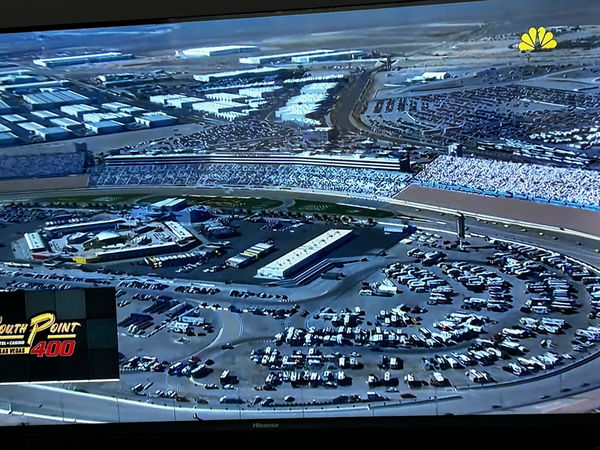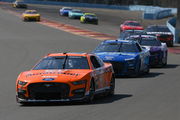

In the world of numbers and superstitions, the number three often gets mixed reviews. In the Bible, it’s linked with some notorious figures like Satan, the Antichrist, and the False Prophet, painting it as a bit of a bad omen. Yet, some folks see it as a sign of something really positive. But when it comes to NASCAR, Kenny Wallace recently pointed out on Twitter that the number three might have a different story to tell.
Kenny’s been observing something intriguing in the NASCAR world. He’s noticed a trend in the passing of drivers. It used to be that these sad events would come in threes, but now, he’s spotted a shift. According to his latest tweet, it seems these losses are happening in groups of six or more, signaling a change in the pattern.
ADVERTISEMENT
Article continues below this ad
Kenny Wallace has been spotting a curious trend among celebrity passings
Back in September 2023, it all kicked off with the losses of three beloved singers: Jimmy Buffet, Smash Mouth’s Steve Harwell, and Gary Wright of “Dream Weaver” fame. This set tongues wagging on social media, with many referencing the eerie ‘rule of threes.’
Watch This Story: The Uncertain Road Ahead Matt Dibenedettos 2024 NASCAR Journey
Flashback to 2016, when we saw a similar pattern. In just ten days, we lost actors Alan Thicke and Carrie Fisher, along with musician George Michael. This phenomenon even made its way into pop culture; remember that “30 Rock” episode where one character frets about being the third celeb to go?
In the NASCAR world, this pattern wasn’t unnoticed either. For instance, back in 2000, within five months, we lost Adam Petty, Dwight Wrich, and Tony Roper, all from different racing series. And let’s not forget 1994, when Wayne McCarthy, Rayme Johnson, and Billy Joe Pressley left us within four months of each other.
But Kenny Wallace pointed out something different this year. Instead of threes, we’re seeing clusters of six or more. Just recently, as Wallace indicated, we said goodbye to Ken Squire, Don Schumacher, Tandy Marlin, Gil de Ferran, Cale Yarborough and another unnamed NASCAR insider in quick succession. Their deaths ranged from November 2023 to January 2024, each due to different causes. Kenny’s tweet captured this shift: “They say people die in 3’s. Now they are dying in packs of 6 or more. What’s going on ?”
They say people die in 3’s.
Now they are dying in packs of 6 or more.
What’s going on ? pic.twitter.com/txVb8FYVm7— Kenny Wallace (@Kenny_Wallace) December 31, 2023
And while this pattern is striking, it’s also a stark reminder of the risks in motorsports. In the past 25 years alone, over 500+ people have lost their lives in US auto racing. But this staggering number has also brought about reforms in the community as NASCAR has doubled down on drivers’ safety.
ADVERTISEMENT
Article continues below this ad
Trending
Since Dale Earnhardt’s tragic passing, NASCAR has poured millions into safety measures
Dale Earnhardt‘s loss was a game-changer for NASCAR, leading to a new rule that stops drivers from stepping out onto the track for confrontations post-accident. It’s a sad truth that most safety measures in auto racing are born from tragedy.
Since spending big on safety post-2001, NASCAR hasn’t seen a fatality at its top levels. This investment has brought about mandatory head-and-neck restraints, walls that absorb impact at major tracks, and a newer, safer car design.
ADVERTISEMENT
Article continues below this ad
Read More: The Dark Side of NASCAR’s Forgotten Track: Fonda Speedway
Of all the racing deaths since 1990, about 70% of these fatalities occurred at short tracks. It’s noteworthy that short tracks are where the bulk of U.S. racing happens. Drag strips account for 22 percent of the deaths in the past 25 years. Thankfully, the annual number of racing deaths seems to be on a decline.
ADVERTISEMENT
ADVERTISEMENT
ADVERTISEMENT
ADVERTISEMENT






